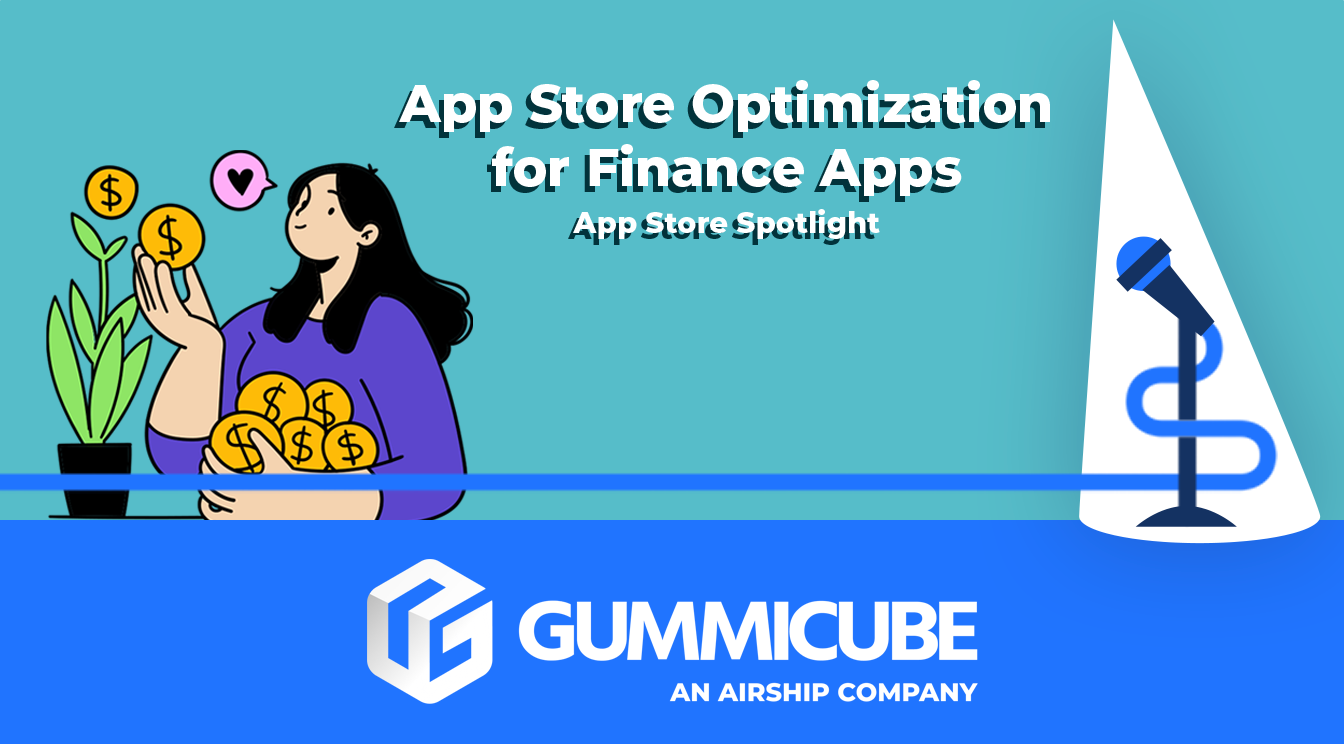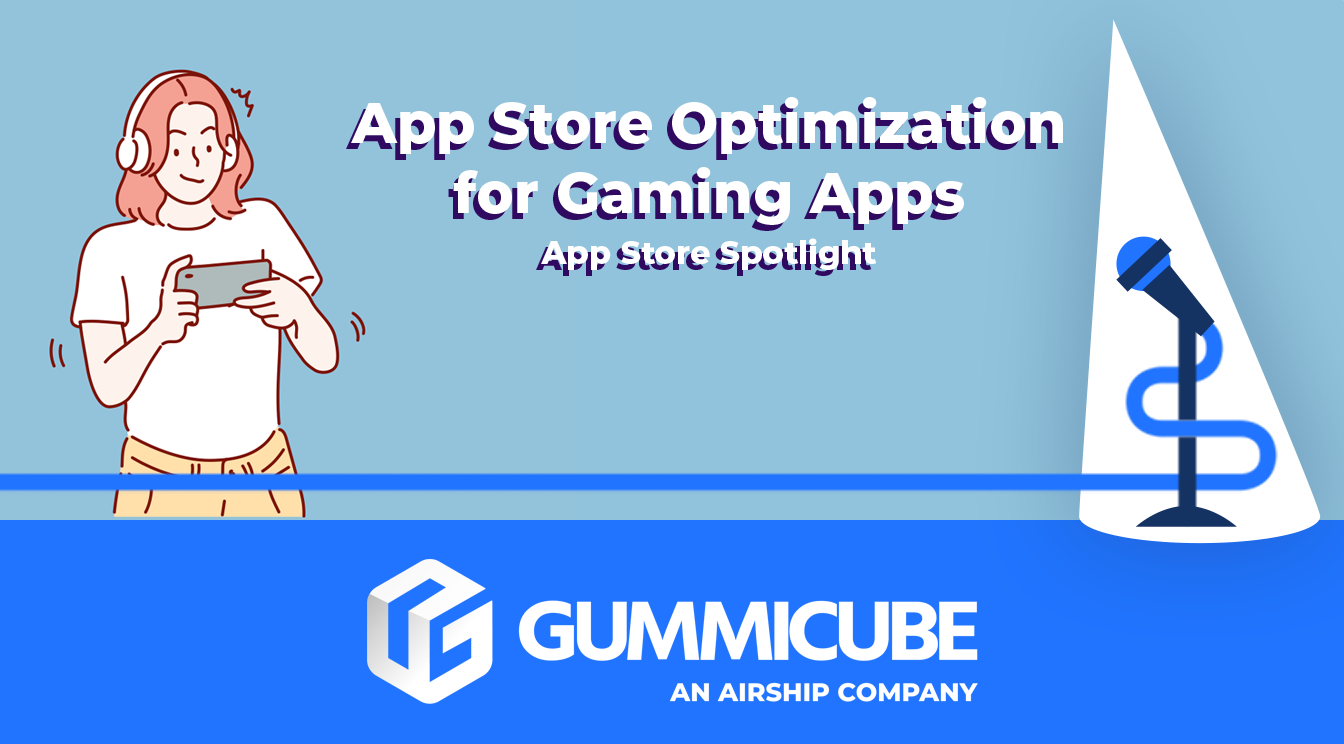Eventbrite App Store Spotlight
June 18th, 2019


by David Bell
CEO at Gummicube, Inc.
Eventbrite is a popular tool for finding local events, with recommendations, ticketing and more. It’s great for helping users find local shows and activities, but how easy is it for users to find on the App Store and Google Play Store? For this week’s App Store Spotlight, we take a look at Eventbrite and see if its App Store Optimization stands out.
iOS
On the Apple App Store, Eventbrite is #21 in the Entertainment category. It’s the top-ranked app for its name, as well as keywords like “events near me,” “event finder,” and “mobile tickets.” It also ranks well for terms like “event calendar” (#7), “ticket app” (#7) and “gameday tickets” (#8). It gets a bit lower for competitors like “ticketmaster” (#15) and specific ticket terms like “football tickets’ (#22), but overall it holds a large number of high rankings.
Creatives: Eventbrite uses an icon with an identifiable logo – a white “e” on an orange background. This creates strong branding, as users can identify the icon at a glance.
Its creatives feature multiple screenshots floating across a series of pictures, connecting the different images. While each one does show off different aspects of the app, such as local events, music and the ticketing system, only a few use callout text. Those that do are not always built to be keyword-friendly or directly related to the screenshot they’re connected to.
For instance, one pair of images features two shots of the app’s event search. They’re connected with one screenshot linking to the other, ending with the callout text “Do more of what you love.” While that is a good tagline, it does not call attention to the app’s functions or features.

Additionally, Eventbrite uses six screenshots, while Apple allows up to ten. This gives it more room to include additional screenshots, each showing various functions of the app and emphasized with callout text. Providing additional information about the app could help its conversions by showing a wider range of functionality to meet more users’ needs.
Title & Subtitle: The app’s title is simply “Eventbrite,” which uses just 10 of the 30 characters the App Store allows. While often times apps with recognizable brand names do limit their title to just the name, it has room to include additional keywords that tell users about the app’s functions. This helps improve organic keyword ranking by targeting new keywords and attracting users who see those terms right in the search results.
The subtitle, “Local Events & Things To Do” uses 27 characters, which form valuable keywords. Thanks to the subtitle, Eventbrite ranks #1 in “Local events” and #2 for “Things To Do” searches, which also helping to build keywords like “Free things” (#3), “local eats” (#8) and “events near me” (#1).
Description: Eventbrite’s description is direct but could be expanded to provide further information about the app and potentially improve conversions. It begins with a lengthy introduction paragraph, which could easily be split into smaller lines. These are easier to read at a glance, so users scrolling down the app page can get a better understanding of what the app offers.
Additionally, it uses a single bullet list for all its features. These could be divided into smaller, keyword-heavy feature sets, listing things like “Event finder,” “Buy tickets” and so forth. That way, users could scroll through the page and quickly discover, for instance, that they can buy tickets directly from within the app and how it can store their purchase information.
The content within the description uses plenty of keywords and provides valuable information. To make the most out of it, Eventbrite just needs to change the formatting to follow ASO best practices – this would make it easier for users to see all the features relevant to their search as they check out the listing, rather than having to search closely to find them.
Google Play
Eventbrite is ranked #33 in the Entertainment category on Google Play. It’s the top app in searches for “event finder,” “events near me” and “mobile tickets,” in addition to being in the top ten for terms like “local events,” “see tickets” and “things to do.” However, its ranking gets lower for terms like “my events” (#14), “concert tickets” (#20), “event tracker” (#20) and “ticket app” (#22). Additionally, its rankings are on the lower end for competitor terms like “Stubhub” (#27), “ticketmaster” (#31) and “Yelp” (#62).
Creatives: Eventbrite’s creative set uses a similar design as the iOS version, although the specific screenshots are different. They still show several aspects of the app, with the screenshots crossing between pictures and the occasional callout text.
As with iOS, they could use more callouts for the screenshots that provide information directly related to the app and its functions. The callout text stating “DISCOVER the best your city has to offer” provides useful details about how the app can be used, for example, although “Your ticket to AMAZING experiences” could put more of an emphasis on the actual ticketing system.
Description & Metadata: While Eventbrite uses its name only on iOS, the Google Play app goes by “Eventbrite - Discover popular events & nearby fun,” which uses 49 of the 50 characters Google Play allows. This adds more keywords to its title, which are used for its indexation.
As Google Play descriptions benefits from having keywords placed near the front of each line to help the store’s algorithm index them, it’s important that Eventbrite utilize them as frequently as possible. Its description is identical to iOS, but it does include some good keywords like “upcoming events” (#1) and “buy tickets” (#13).
This is another situation where the description would benefit from feature sets. Not only do these make it easier for users to see what features the app provides while glancing through it, but each feature set also provides good opportunities for using keywords. For instance, Eventbrite could target the “Concerts” (#15) keyword by making a feature section for those features, which would include information about locating concerts with the app.
A Google Play description needs to be written with keywords in mind, while still remaining informative and easy to read. While the current description is a good start, it can reformat it to improve its focus on all of those aspects.
Overall
Eventbrite is a well-made and successful app, but there is always room to improve. It could focus on targeting the keywords it ranks moderately well for, then improve its rankings for its keywords by upgrading its creative set and descriptions to follow ASO best practices. This would include adding more screenshots with callout text related to the app’s features and formatting its descriptions for keywords and ease of reading. In doing so, it could potentially improve its conversions and boost the already popular app further.
Want more information regarding App Store Optimization? Contact Gummicube and we’ll help get your strategy started.
Similar Articles

Posted on April 5th, 2024
How can developers of journal apps optimize to stay relevant, differentiate themselves, and compete in the App Store? This App Store Spotlight jumps into some of the strategies employed by the top journal apps. Jump in to learn more.

Posted on March 15th, 2024
In this App Store Spotlight, we dive into the intricacies of optimizing finance apps and analyze the unique considerations of one of the most popular categories in the app stores.

Posted on February 23rd, 2024
Gaming is the largest category in the app stores by far. One out of every six games on the app stores is a mobile game, so how can you stand out from the competition? Find out in this App Store Spotlight.






